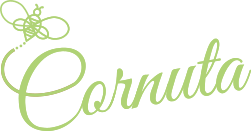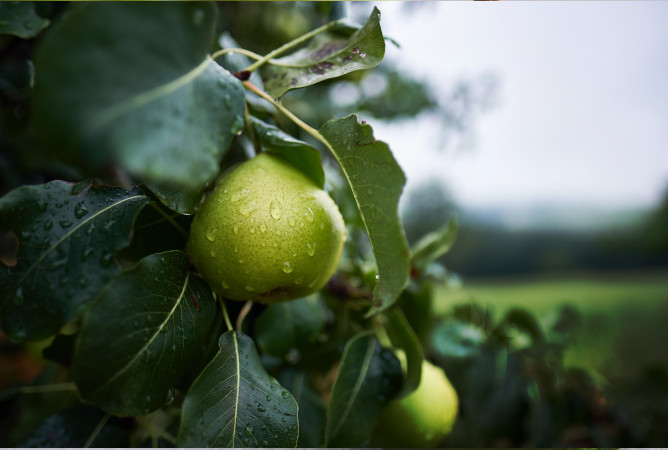Dehydration of pears
Pear belongs to the Rosaceae family, just like apples and dunes with which many similarities are shared. Pear farming in Croatia has been declining in recent years and according to data from the Food and Agriculture Organization (FAO) for 2017, it is carried out at 700 ha with yields up to 6 t / ha. In comparison, the largest European pear producer – Italy, over 30,000 ha regularly collects more than 20 t / ha.
The production of pears is primarily determined by the physical, chemical and biological properties of the soil, as well as ecological conditions: altitude, position, exposure and slope of the terrain, climatic factors, and type and number of pollinators. Of course, all the aid and agrotechnical measures are of great importance and properly implemented.
Pear is prone to alternative birth, and when we take into account the climate conditions that are often not ideal during flowering, it is clear what the problems are facing manufacturers. Compared to apple, the pear blooms earlier and the possibility of spring frosting is considerably higher.
Already when planting orchards, account should be taken of the selection of varieties. With one of the most common varieties, one or two varieties of pollinators from the same flowering period should be planted. In addition to pollinator varieties, pollen insects contribute to successful pollination. Insufficient number of insect pollinants during flowering, except for quantity of produce, affects their size and shape. Seeds with more embryos are more common and more regular.
For most pears, optimal conditions for fertilization are 18 to 24 ° C and relative humidity 65-85%. In continental Croatia, such springs are rare, because pear often blooms when the weather is rainy and cold. Pear flowering lasts for 10 to 22 days. The turkey grain in the process of fertilizing the spore in the bladder tube and penetrates through the muzzle of the gall bladder to the egg cell. The optimal conditions for plowing the turkey are 21 to 27 ° C. The path of germinating pollen depends on temperature conditions and is measured in days. At a temperature of more than 15 ° C this time lasts for at least two days, and at a temperature lower than 15 ° C it can take 3-7 days.
Since the best success when plumage is achieved in the first 72 hours, ie three days after the beginning of flowering, it is clear that the orchard needs to have enough pollinators to perform his task within that time. The insects that contribute most to successful spraying of pear are solitary bees, bumblebees and honey bees.
The solitary bees Osmia bicornis and Osmia cornuta are the most significant pestle pollinators. It actively flies at a temperature of 5 to 8 ° C. They live alone, and their nest builds in different cavities and muddles them. They do not collect food supplies for their needs but only for offspring. During the day you can visit up to 5,600 flowers. The body of these bees is covered with dense hairs. Pelud accumulates on the abdomen. They easily receive pollen grains, but they are easy to release, which is of particular importance for the success of the plunder. They do not give preference to a certain kind of fruit, but only the fruit is close to them. The radius of their flight from the dwelling is 100-150 m. Therefore, for efficient pollination the layout of the dwellings of great importance. They should be evenly spaced to a distance of up to 100 m. For successful pollination, 1 ha of commercial pear planting requires 1,000 to 1,500 solitary bees.
Bumblebees (Bombus spp.) Are also excellent pollinators. During the day the bumblebee visits 4,500-5,600 flowers. Active firing already at 5 ° C. However, in the spring, at the time of flowering, the number of bumblebees is small, and while strengthening their litters, the flowering of fruit trees is already over. It is therefore advisable to set bumblebee near the orchard or enter the purchased bumblebee community.
The medullary bee (Apis mellifera) actively flies at a temperature of 15 ° C and is most active at 20 ° C. During the day one bee radilica visits 2,000-2,800 flowers. The cogwheels choose a floral type from which they collect nectar and pollen – nutrition and nutrition. Provided with food supply at lower temperatures do not have to get out of the hive. Their number in the orchard is regulated by the number and layout of the set beehives. As the pear flower contains low levels of sugar in nectar (up to 10%) and releases an unpleasant smell of acid that rejects the honey bee, successful breeding of bees is needed to prepare or to fry. Breeding of bees should start 20-30 days before flowering. Bees should be fed with sugar syrup (50% water sugar solution) in which you must add the flower pearls to distill and release their essential oils. The same solution can, after diluting with water in a ratio of 3: 1 to the benefit of water sprayed on fruit trees. For 1 ha of planted pear plantation, it is necessary to set 6-8 honey bee honey bees. Trunks should be arranged in groups: 3-4 hives at a distance of 100-150 m.
For optimum results in pollination, the best synergy of all types of pollinators is. In order to attract and retain them as much as possible in the orchard, account should be taken of spraying only with appropriate means that are not harmful to polluters. It should also be borne in mind of spraying time, is ideal in the afternoon sunshine when polluters withdraw to their homes. In order for bees to have a source of food before and after flowering the orchard, the grass should not be mown before opening the first flowers on the fruit trees, and other flowers and fruits whose flowering period is abundant with the flowering of the plantation is preferable.
Source: mr. Sc. M. Ševar: “Problems of Powder Dehumidification”, Pomologia Croatica, vol. 14-2008, no. 1

